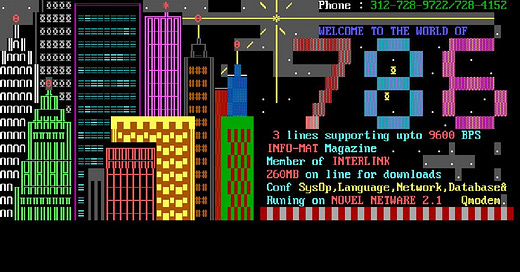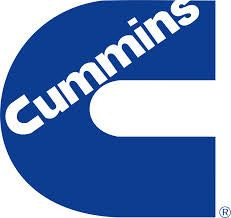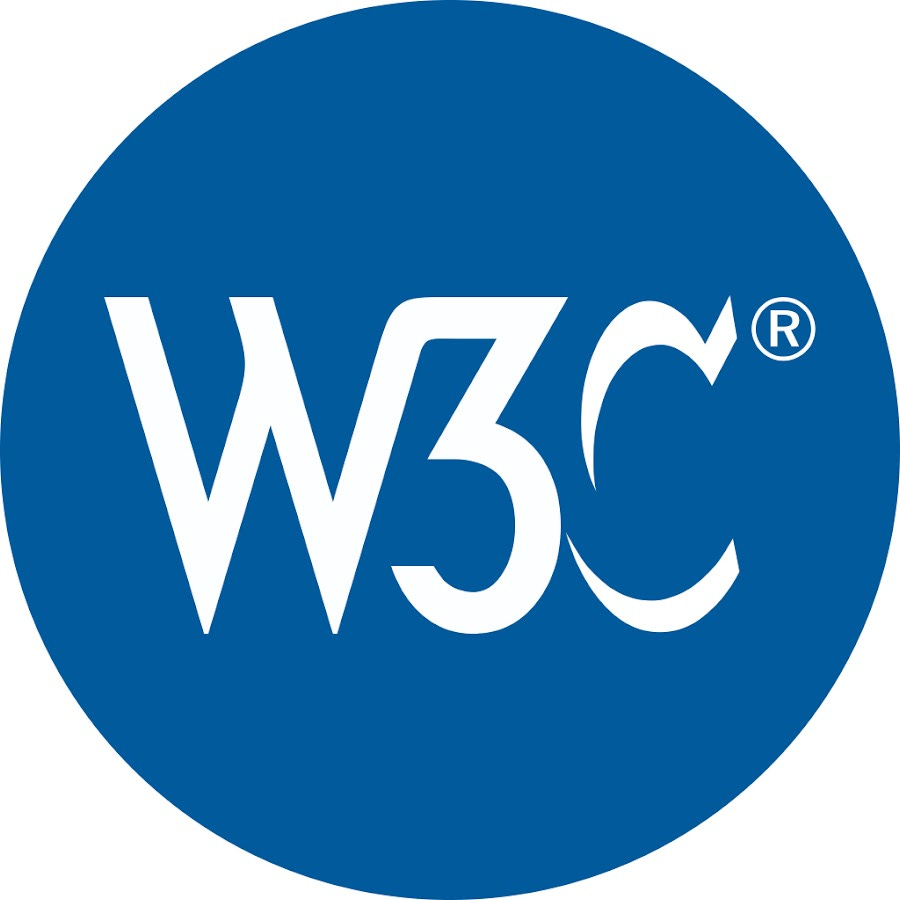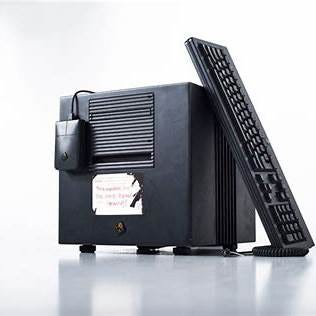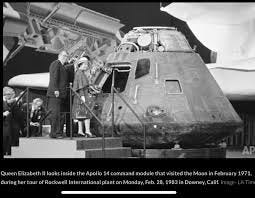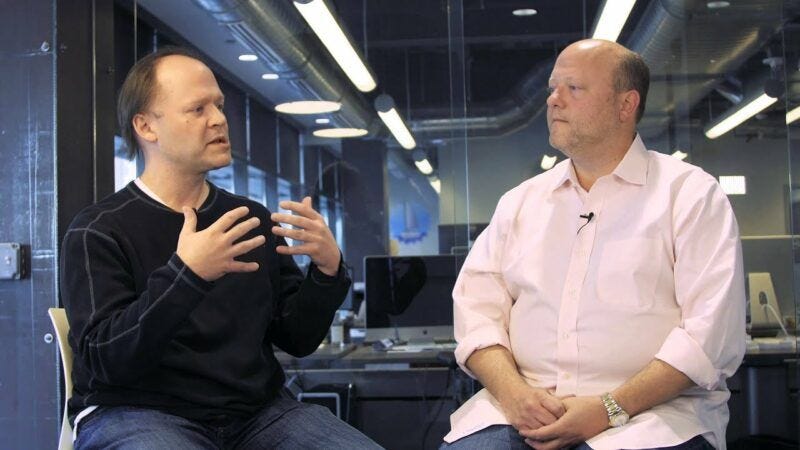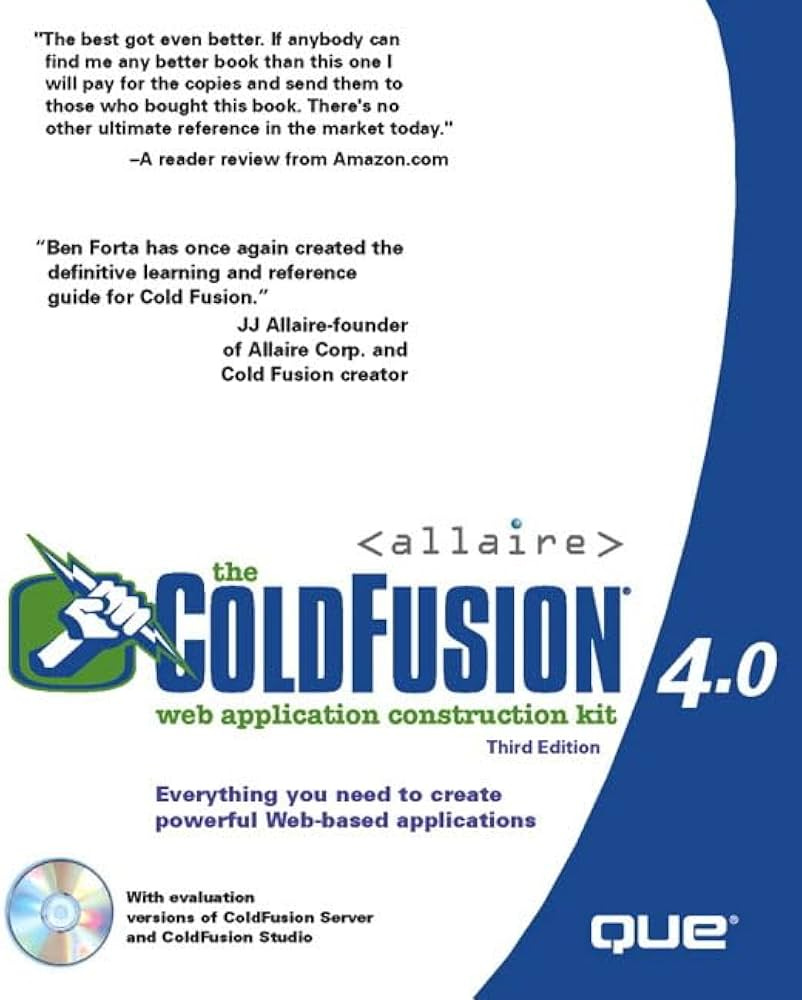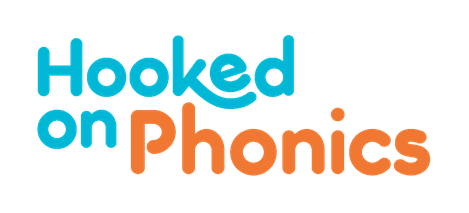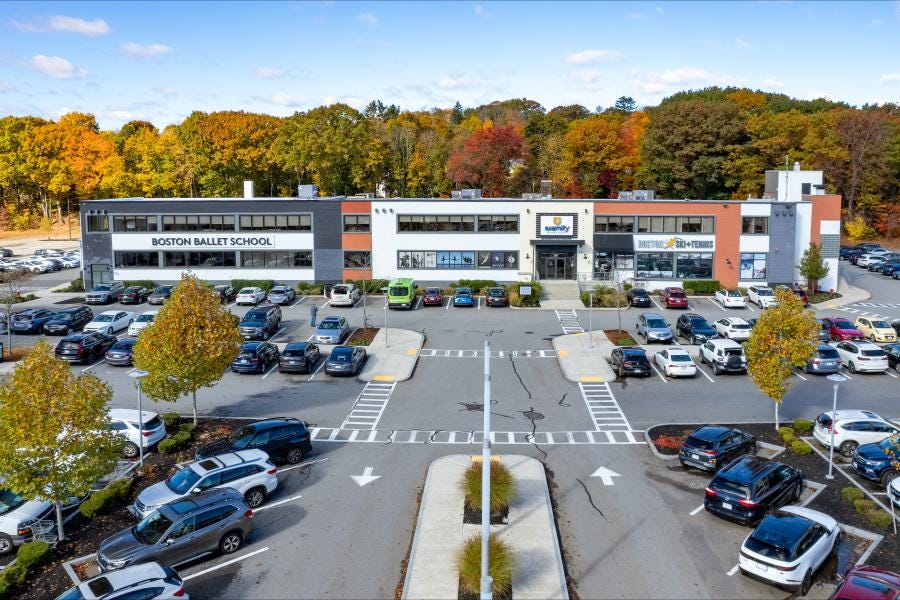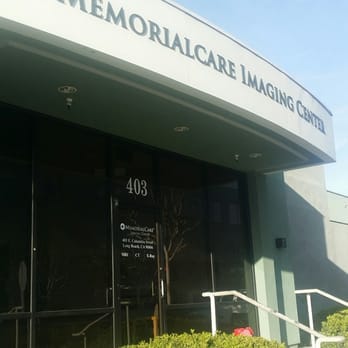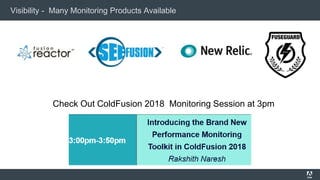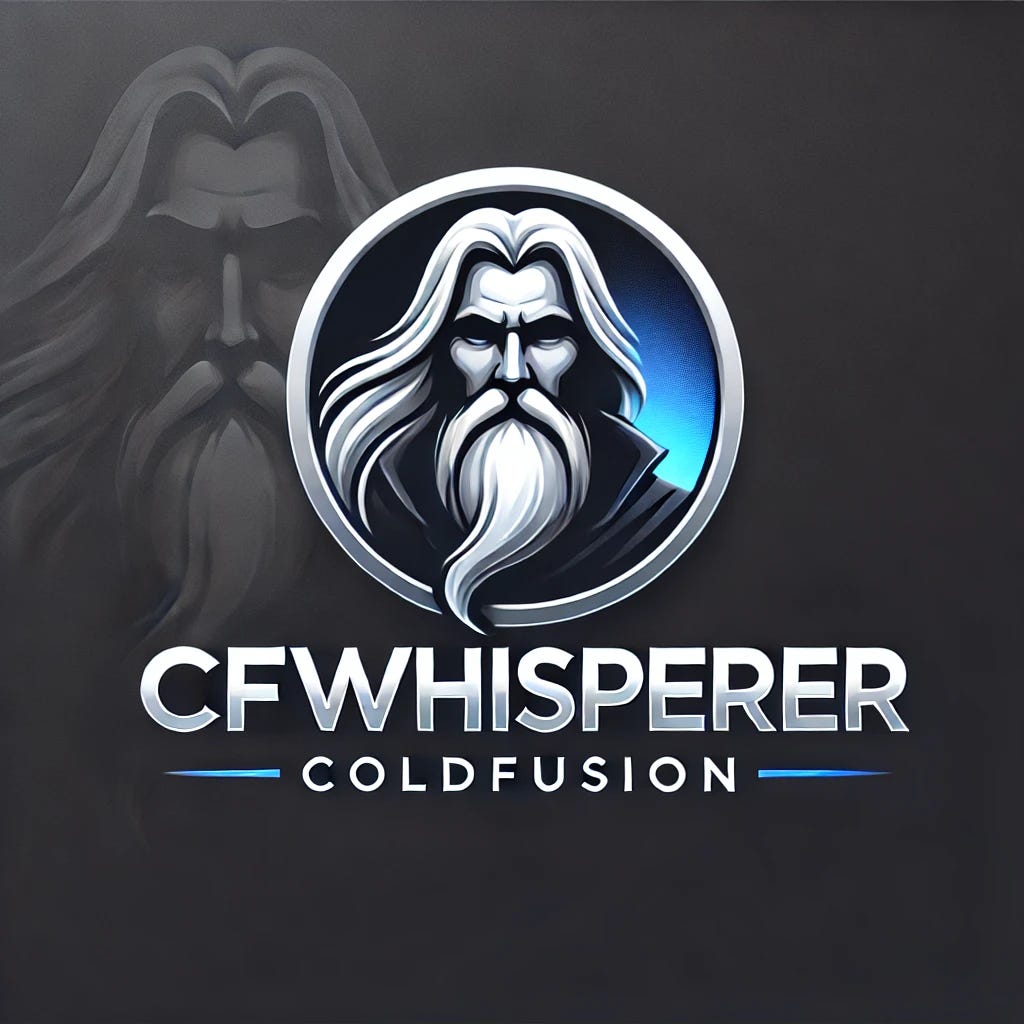The Background
Sometime in 1993 I went to a Bulletin Board conference (OneBBSCon) in Colorado Springs CO. At that time I was running a small export consultancy out of LA sourcing gas turbine parts from a company in Albany NY and also large diesel engine parts (for really large engines). Both were going via a middle-man in Hamburg, Germany to the Electricity Utility in Saudi Arabia. The first 25 years of my career were spent in the capital equipment parts world, parts for everything bigger than trucks and buses.
During my previous travels I had met with a senior engineer at Cummins Diesel and he had shared with me their plethora of excess parts and how difficult it had been to sell them on. We talked around Cummins creating faxable lists to send out but that they were always out of date after a couple of days. “If only we could get the excess parts stock database in a bulletin board of some kind like Compuserve” he had bemoaned. This article gives a good insight into the emergence of Bulletin Boards.
This lit a fire in me, as computing was already an avid hobby of mine. So I went to OneBBSCon in this case in Colorado Springs CO - USA, looking for database interfacing software. The Online Networking Exposition and Bulletin Board System Convention (ONE BBSCON) was a significant annual event in the early 1990s, bringing together enthusiasts, developers, and industry leaders of Bulletin Board Systems (BBS). There was one called Breadboard, if I recall that correctly. The Bread Board System (TBBS) was a prominent bulletin board system (BBS) software developed in 1983 by Philip L. Becker. Designed for MS-DOS.
To enhance its capabilities, TBBS offered several add-on modules:
TDBS (The Data Base System): A dBase3-compatible compiled language that enabled the creation of multiline applications and games within the TBBS environment, eliminating the need for external batch files and enhancing system stability.
TIMS (The Integrated Mail System): Facilitated interaction with FidoNet technology, expanding TBBS's messaging capabilities.
QSO: Allowed users to utilize the popular QWK message format for offline mail reading.
SYSOM: Provided sysops with real-time control over files, user accounts, and menu flags without necessitating a system shutdown.
Interchange: Enabled TBBS to connect with other services by dialing out, facilitating networking between multiple BBS systems.
TIGER (The Internet Gateway and E-Mail Router): Offered Internet email and Usenet newsgroup connectivity via UUCP.
UltraChat: A flexible chat module that included default configurations to emulate popular chat systems from competing products and was released as an optional alternative to the default chat feature.
This was exciting but the price was a bit crazy; however something magical then happened in a bar in the hotel.
An Awakening
So here I am in the bar, eating a snack and hearing a nearby conversation between 3 or 4 people and I heard the word “cyberspace” a few times and also web. It was a smallish bar and eventually we all got talking; this is when I learned of, the about to emerge, world-wide-web. For several years I had been involved in computer networking for friends and a bit for British Leyland in the UK, in any case, as I listened, my mind heard “so we can share files between other computers anywhere if we allowed it?”.
The World-Wide-Web (of www fame) was evolved by Tim Berners-Lee, later to become Sir Tim Berners-Lee. It was based on Hypertext Markup Language (.html)
However, there is a bit of history to this. The development of the World Wide Web (WWW) was a pivotal moment in the evolution of the Internet, building upon earlier systems designed to facilitate information sharing and retrieval.
Early Information Retrieval Systems:
Archie (1990): Developed by Alan Emtage, a postgraduate student at McGill University in Montreal, Canada, Archie was the first tool for indexing FTP archives, allowing users to more easily identify specific files.
Gopher (1991): Created at the University of Minnesota, Gopher provided a menu-driven interface for accessing text-based information across the Internet. It organized resources hierarchically, making navigation straightforward.
Veronica and Jughead: These search tools were developed to index Gopher's content. Veronica (Very Easy Rodent-Oriented Net-wide Index to Computerized Archives) and Jughead (Jonzy's Universal Gopher Hierarchy Excavation And Display) allowed users to search for specific Gopher menus and items.
The Birth of the World Wide Web:
In March 1989, while working at CERN, British scientist Tim Berners-Lee proposed a system to manage and share information more effectively. By the end of 1990, he had developed the first web browser and server, marking the inception of the World Wide Web.
Key Developments:
1993: CERN placed its World Wide Web technology in the public domain, donating it to the world. The National Center for Supercomputing Applications (NCSA) released Mosaic 1.0, the first web browser to become popular with the general public.
1994: Tim Berners-Lee founded the World Wide Web Consortium (W3C) to develop open standards for the Web.
These advancements transformed the Internet from a tool for researchers into a global platform for information sharing, communication, and commerce.
Next Steps
So after this history lesson, that I lived through, what comes next? Read on and be amazed; I was as I lived through all of this.
My Kingdom for a Web Server!
After the conversation in the bar and after returning home, I began a search for a web server. What I found is that only Unix systems had website software options and they were very bloody expensive, think Sun Solaris (or whatever it was called back then). In 1994, I heard that O'Reilly (yes the bookworms) were going to release website software for Windows O/S’s. In the first case I think it was released for Windows 3.1, somehow or other I had obtained a copy of Windows NT 3.51 and some hardware, a PC I had built myself and I began to mess around with software called “HotMetal” a GUI environment for HTML. Then buried within the O'Reilly software options during install, was this wonderful name, Coldfusion (no capital F as yet). Being not a physicist, it just sounded cool to me, but what was it?
Coldfusion or ColdFusion - dbml - cfm - cfml?
Somehow or other in late 1994 or early 1995 I ended up at a meeting somewhere in LA about web application development. A bit more background first, I had been living in LA since late 1989 and was on an H1 visa, so could not work in the USA. What I would do was to go back to Europe and spend 6-8 weeks working to make money and then return to the USA. This gave me lots of free time whilst here, so I spent that free time building PC’s and diving ever deeper into tech; at first via networking (think token-ring, 10 base T etc) and databases (this was pre SQL or pre SQL to me). So, back to that web developers meeting in LA, during that meeting I got involved in a conversation with a senior developer at Rockwell International and the subject turned to databases. The Cummins Diesel needs were still in my mind and I mentioned this to him; what came next blew my mind; he says “have you ever heard of Coldfusion?”
I lived in Downey CA at the time and in addition to it being the residence city for the Carpenters it was also home to significant parts of NASA space programme (NASA would come back into my tech life, a few years later).
“Have you ever heard of Coldfusion?” (a fortuitous echo ;) a thousand light-bulbs went off in my head, simultaneously (LED’s were still a bit off in the future at this time). Seeing my surprised look, he amplified a little. It turns out that they had been running some tests with Microsoft Access and Coldfusion building web-based front-ends to interact with Access, with great success. When I got home that night I could hardly sleep, in any case I did; eventually. A remotely-secured-Access-ible database, via a web browser; blimey!
One interjection here, Microsoft Access has been subject to savage treatment over the years; however. As a development tool, it has been very, very useful.
Coldfusion The Savior Emerges
This is a nice article on the emergence of Coldfusion and here we see the Allaire Bros, J.J. Allaire on the left and Jeremy Allaire on the right.
As this was still 1995, the spelling of Coldfusion (ColdFusion would come later - note the f-F and no I am not swearing!) still reigned. After playing around with a few test cases (which probably took me days) I splurged and bought Colfusion, it was version 1.54 and if my memory serves me correctly it cost me $375.00. So I reached out to my Cummins Diesel contact and asked if he could send me some test data from their excess-parts database, which he did. After some time I managed to create a working model which could be searched, relatively meaningfully. This involved lot’s of back and forth with Allaire support and I recall some responses from J.J. Allaire and at this time Allaire was still in Cambridge MA, USA.
In any case Cummins Diesel were pretty happy and one day, some time later, I get a call from Diesel and Gas Turbine magazine asking to do an article on the system I had evolved. Anyone in the Diesel and Gas Turbine world will have heard of them, they are literally world-famous, as is Cummins of course.
How Not To Run A Business
After the Diesel and Gas Turbine article I got many responses, however and as mentioned earlier, I was not allowed to work in the USA. At that time I was living in a Mexican family in LA and my girlfriend, later to become my wife came up with the idea that she would start a small business. In fact, if she had actually been running the business she would have done a lot better than I did. There were people in the UK in another publication, Resale Weekly, who helped sell used capital equipment and we eventually created a digital version of this, or at least got it all into a database. Then I got “too-big-for-my-boots” and tried to go worldwide only to find that we could not get a credit-card merchant account and that wire transfer fees were higher than what we could charge, if only Bitcoin were around then. This was for equipment listing fees not web development and reluctantly we sold this part of what were doing for a pretty small amount and never heard any more of it. However, Coldfusion (ColdFusion) had entered my life and never left, it was literally life-changing.
Where The Heck Are We?
So, all of this time, I had been running Website Pro (by now) and Coldfusion on a hand-built server in a spare bedroom in the suburb of Downey in Greater Los Angeles, this was on a fractional T1 at 56k, (yes 56K!), this was costing over $700 per month. By dint of good fortune our first commercial website was for the Queen Mary Hotel in Long Beach CA. This was a challenging project as it was very visual, by another dint of good fortune I had attended a Bulletin Board presentation on optimizing images and this helped me greatly with the Queen Mary. Working with the Queen Mary was wonderful, I met the historian, made a great friendship there with a lady called Maria and married the Lady who became my wife; Norma, there on the Queen Mary. Incidentally, all of this so far was Coldfusion using .dbml. Maria would return later on, as a result of ColdFusion, more on this later.
Working At Allaire (At Last :)
In late 1998 a recruiter approached me to interview as a Consultant for Allaire, to be honest, I felt unworthy of this because I had not done that much heads-down development but I had done a lot of networking-database-server work. The main interviews were to be held in Chicago and out I flew and on getting there there were a good number of us; maybe around 25 if I recall correctly. It turned out that one more person had come from LA, a bloke called Pat Quinn, he was on a different flight though, I think, in any case we did not meet till we got to the hotel in Chicago. At that time I was living in Downey CA and Pat in Santa Monica CA, around 20 miles apart. We were both hired and I think that started in 1999 sometime. By this time, Allaire had moved to palatial premises in Newton MA, in the USA. Of course, we were in the throes of the Dot Com bubble and Allaire benefitted beautifully from this. By this time Coldfusion had become ColdFusion.
My first on-site client, as an Allaire ColdFusion Consultant, was Hooked on Phonics, in San Francisco, CA. It was here that I realized that visual communication of progress, on a daily basis, was a powerful tool. We had the CEO coming to look at our whiteboard as he came in each day. In addition, I became good friends with the Web Master there and this kick-started my foray into painting, a tale for another time.
Dissolution & Disillusion
It was in early 2001 and all of us consultants (I think there was at least 30 of us by this time) were all in Newton at Allaire’s Headquarters. The main reason was to discuss and learn about the upcoming release of the next Spectra version. A rumor began to circulate of a merger or takeover of Allaire. It slipped out that the first letter of the companies name began with “M” so you can imagine what we all thought. Of course, this turned out to be Macromedia and was billed as a merger.
As 2001 ensued most of us consultants were laid-off, including that bloke, Pat Quinn and I (more on this soon).
ColdFusion Versions
Just as a note point, I have worked with and installed all versions of ColdFusion except 1.0.
ColdFusion 1.0 (1995): The initial release included basic database connectivity and a tag-based programming language, Database Markup Language (DBML), later renamed ColdFusion Markup Language (CFML).
ColdFusion 1.5 (1996): Introduced email DBMAIL and custom tags (CFX) written in C/C++. (This is the version I started with.)
ColdFusion 2.0 (1996): Expanded language capabilities, introduced CFML with tags similar to HTML, added file management, application frameworks, and client management.
ColdFusion 3.0 (1997): Brought full-text searching, custom tags, template encryption, and server scope. Version 3.1 added support for Solaris and Remote Development Services (RDS).
ColdFusion 4.0 (1998): Significant update with cfscript, locking (cflock), transactions (cftransaction), and hierarchical exception handling.
ColdFusion 4.5 (1999): Enhanced Java integration, performance metrics, and additional string conversion functions.
ColdFusion 5.0 (2001): Last version under Allaire, introduced user-defined functions and improved admin tools. This was the first release after Macromedia acquired Allaire.
ColdFusion MX 6.0 (2002): Rewritten in Java, introduced components (CFCs), and SOAP web services. Enabled by the earlier acquisition of Live Software and JRun by Allaire. This version faced significant challenges due to the transition from C++ to Java and was known for its instability.
ColdFusion MX 6.1 (2003): A rewrite led by Sean Corfield and the Macromedia team, which addressed many of the issues found in MX 6.0, making it a more stable and robust version.
ColdFusion 7 (2005): Enhanced cryptography and additional tags and functions, released under Macromedia.
ColdFusion 8 (2007): Introduced implicit arrays and structs, released after Adobe acquired Macromedia.
ColdFusion 9 (2009): Added Script Components, ORM via Hibernate, and improved local scope management.
ColdFusion 10 (2012): Moved to Apache Tomcat, improved scripting and tag support.
ColdFusion 11 (2014): Introduced member functions and full script support for all tags.
ColdFusion 2016 (2016): Brought security analyzers and an API manager.
ColdFusion 2018 (2018): Made semicolons optional and further enhanced performance and security.
ColdFusion 2021 (2021): Focused on cloud readiness, performance enhancements, and added new language features.
ColdFusion 2023 (2023):
Working At Allaire
This was a mercurial time, this was before remote work was typical so we all got flown all over the place. I had been assigned to the Spectra team, Spectra was a pretty decent CMS using nested Custom Tags. It spread quickly in the US, especially in the Healthcare Sector.
Here I will list clients I had in this time with just short personal comments and not technical task information.
Adobe - Yes I have helped Adobe.
Barnes & Noble - Their Manhattan store is incredible for books.
Baylor College of Medicine -
Carlson Group - Visa, we were told we saved them $2 Million.
Cleveland Clinic - more lovely people.
Discovery Channel -Discovery Education, lovely people to work with.
eBay - eBay used CF to run financial back-end systems.
FAA Atlantic City - Lots of physical testing.
FAA Washington DC - Keeping us safe when we fly, me too.
Free Library of Philadelphia - Beautiful people.
Gambro Health - I hope not to have kidney problems in my life, but we never know.
Hooked on Phonics - Here we used whiteboards to report progress to everyone and I took my first steps in painted art.
LA Department of Water and Power - Important water resource.
Mayo Clinic - Incredible underground restaurants etc.
NASA - Spaced out work.
OHSU - Portland.
Radiology Practice Management - Using CF to primary view Radiology Images. (Thanks Maria for creating the first Web-Based Primary Image Review Website using ColdFusion :)
Royal Bank of Scotland - Financial powerhouse.
Sempra Energy - Formerly the gas company for LA.
Sony Pictures - Got me to work with Todd Rundgren, eventually.
University of New South Wales - Sydney - The Sydney Opera House is amazing.
US Airforce - Keeping us safe.
What The Heck Is Webapper? (Would Now Be DAPPer!)
Pat Quinn was another Allaire-Macromedia consultant and as stated earlier we both met at the initial Allaire interview in Chicago. Soon after I was laid-off by Macromedia I got a project with Sempra Energy in downtown LA. It was pretty interesting we were using ColdFusion (CF) to interface with a mainframe running Cobol. Someone mentioned that they needed extra CF help, so as Pat lived close by (in Santa Monica) I recommended they contact him. Pat happily joined in and we had many enjoyable lunches reminiscing about Allaire and Macromedia days. Whilst I had specialized mainly on Spectra Pat had joined the JRun team there. One day I get this phone call from Ernst and Young in Cleveland, OH. They were looking for consulting support on quite a big scale, for ColdFusion there; the challenge though was that they wanted to deal with a company and not an individual. I had already told Pat of the initial call, so we decided to form Webapper as an LLC.
We had many interesting projects over the years, one highlight was for the firm who ran the official web site for the Indianapolis 500 (aka Indy 500), using ColdFusion. Each year at the pinnacle of the race, the system would fail. So with just over two weeks to go, we were asked to help. Realizing that we needed a very rapid scale up for a short time, we reached out to AWS via auto-scaling. Moving web sites between hosting companies is no cake-walk and only two weeks time left it was a challenge. Amazon was very helpful, we moved the sites successfully and for the first time they got through the Indy 500 successfully. This was particularly exciting and this is an article that Adobe created about this project.
Seefusion The Troubleshooting Tool
In 2001-2002 ColdFusion running on Java was released as ColdFusion MX 6.0. This allowed access to many performance metrics not directly available in the previous C++ versions of ColdFusion. In conjunction with another Ex-Allaire Consultant Webapper launched Seefusion, based on years of on-site and remote troubleshooting work of Mike Brunt, Pat Quinn and Daniel Bantarri.
SeeFusion, developed by Webapper, is a performance monitoring and troubleshooting tool designed for Adobe ColdFusion and Lucee servers. It provides real-time insights into server operations, enabling administrators to identify and resolve performance bottlenecks effectively.
Key Features of SeeFusion:
Real-Time Monitoring: Tracks active, recent, and slow requests and queries, offering immediate visibility into server activities.
Bottleneck Identification: Detects request and query bottlenecks, facilitating prompt resolution to maintain optimal performance.
Memory Utilization Tracking: Monitors memory usage levels, aiding in efficient resource management.
Out-of-Band Access: Designed for access via a browser or XML-aware process connecting to a non-standard server port, ensuring availability even when the server is unresponsive.
Enterprise Edition: Features a dashboard view for monitoring multiple servers simultaneously and includes a database logging system for historical analysis.
In June 2022, Webapper transitioned SeeFusion to an open-source model, allowing the community to contribute to its development and customization.
Where Did CFwhisperer Come From?
I am never certain of the correct capitalization here, one day I will figure that out ;)
In 2006, I amicably left Webapper as a company (officer), I probably over-inflated myself here, however I was definitely a co-creator there. Now back in the workforce I got a job as Manager Of Web Development at a company called Campaigners in El Segundo CA. Campaigners was a ColdFusion shop and Campaigners, Inc., established in 1997 and headquartered in El Segundo, California was a sales and marketing agency specializing in the consumer electronics sector. The company offered outsourced field sales and marketing services, along with training and incentive programs.
In 2007, Advantage Solutions acquired Campaigners, integrating its services into their broader marketing operations.
The development team at Campaigners consisted of myself, Rex Aglibot and Lisa Lee and also, for a short time an exceptional database administrator, Clement Huge. This is without doubt one of the best teams I ever worked with. All of us did some more ColdFusion work for Webapper as the years passed along. In actual fact, it was Lisa who came up with the cfwhisperer name (this capitalization looks better :).
Teratech
As one of the earliest ColdFusion-centric firms, TeraTech is a seasoned software development firm specializing in Adobe ColdFusion services. Established in 1989, the company has over three decades of experience in the industry.
Services Offered:
Consulting: TeraTech provides expert guidance on ColdFusion projects, assisting clients in optimizing their applications and addressing complex challenges. This is the area that I often help with on specific projects and am still doing so to this day.
Development: The company offers comprehensive development services, including the creation of new applications and the enhancement of existing ones, tailored to meet specific business requirements.
Maintenance: TeraTech ensures the ongoing performance and reliability of ColdFusion applications through regular maintenance, performance tuning, and security updates.
Modernization: Specializing in updating legacy ColdFusion applications, TeraTech helps clients integrate modern technologies and best practices to improve performance, security, and scalability.
Teratech ColdFusion Modernization
So What’s Next?
Stay tuned, there is more coming soon.

